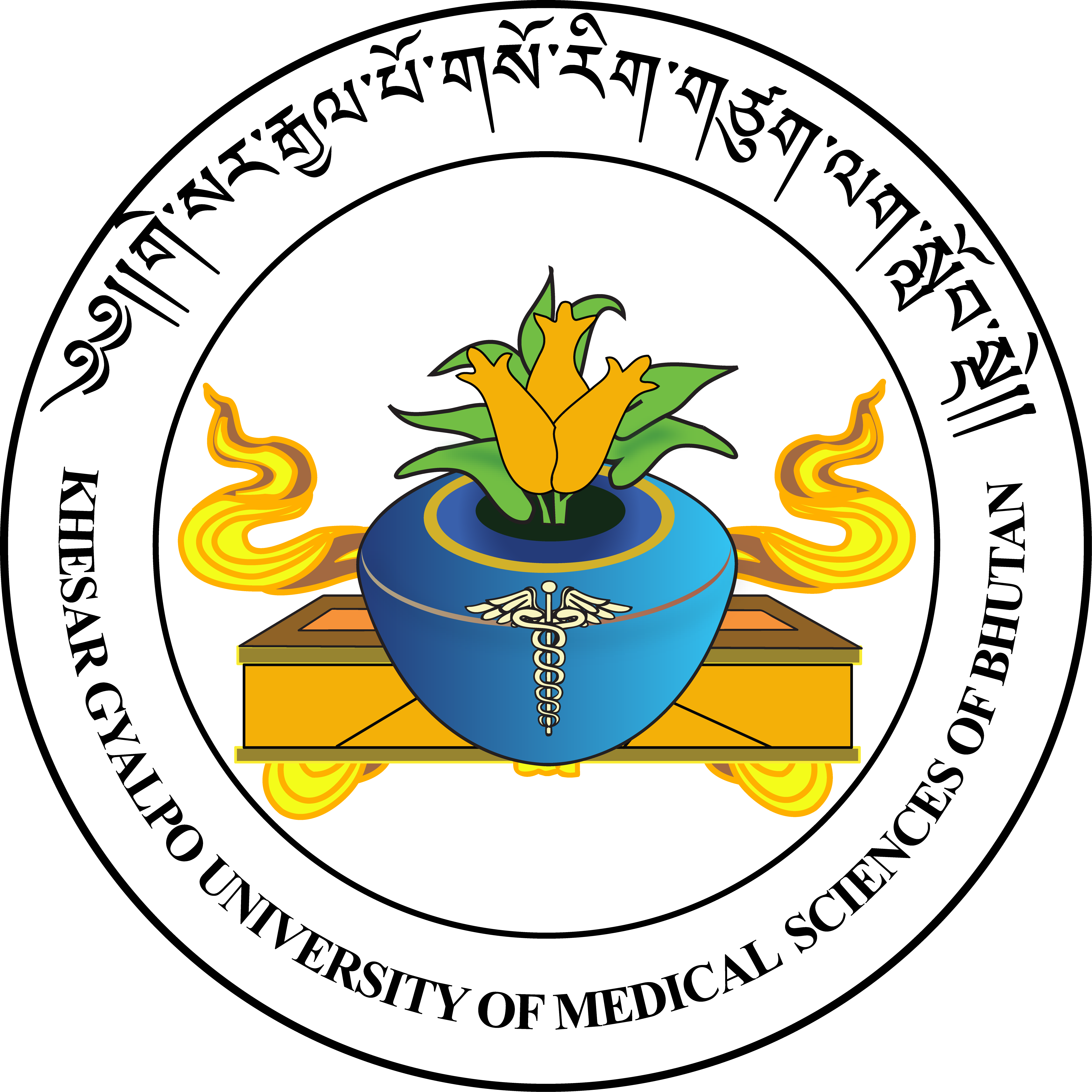The University logo is composed of a deep blue nectar bowl in front of a ‘pecha’. The bowl contains a blooming myrobalan plant. Two intertwining snakes on the rod of Aesculapius (Asklepios), are inscribed on the front of the bowl. The ‘pecha’ or religious text is bound in a flowing golden yellow scarf with a central knot. The name of the university in dzongkha is given in a semi-circle above the plant while the English version is inscribed in lower circle.
Significance of the Logo
The lapis lazuli bowl containing nectar signifies medicine that cures all ills, hindrances and obstacles. The deep blue colour signifies ‘Lapis lazuli’, which is a relatively rare semi-precious stone that has been prized since antiquity for its intense blue colour. The blue colour also embodies infinity, ascension, purity, and healing.
The blooming myrobalan plant, the herb used for healing since ancient pharmacopoeia, signifies a selfless quest for alleviation of the sick and the suffering. It also alludes to the abundance of medicinal plants and herbs in Bhutan.
The intertwining snakes are taken from the staff or rod of Aesculapius (Asklepios), the mythical God of Medicine according to the ancient Greek. The staff of Aesculapius is generally adopted worldwide as an universal symbol of the practice of medicine and the art of healing.
The ‘pecha’ or religious text signifies the source of knowledge, both traditional and modern systems of medicine. The ‘knot’ signifies comprehensiveness of knowledge while the flowing nature of the scarf denotes the flow of energy from the book to the learner. Golden yellow colour signifies the preciousness of knowledge.

